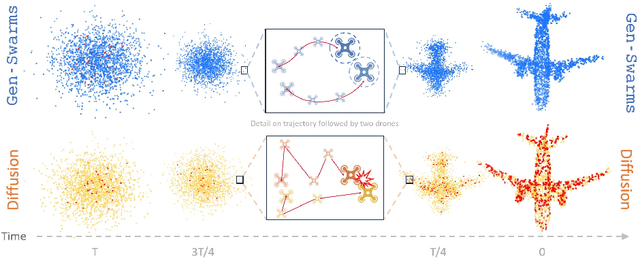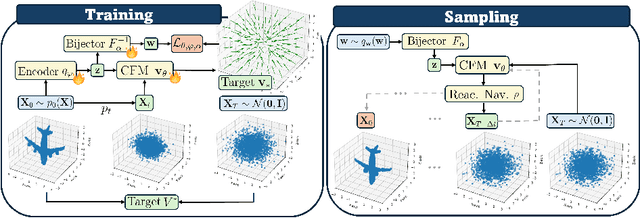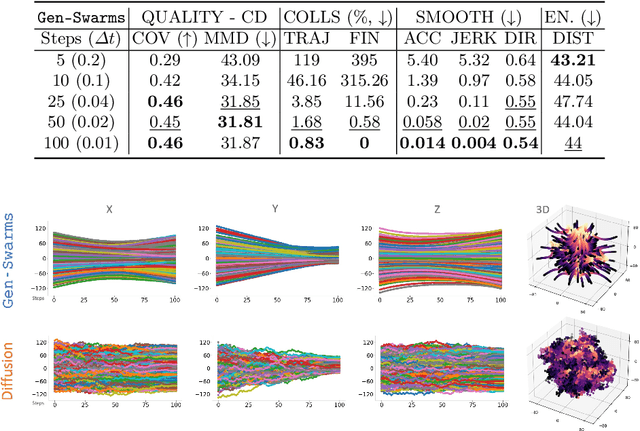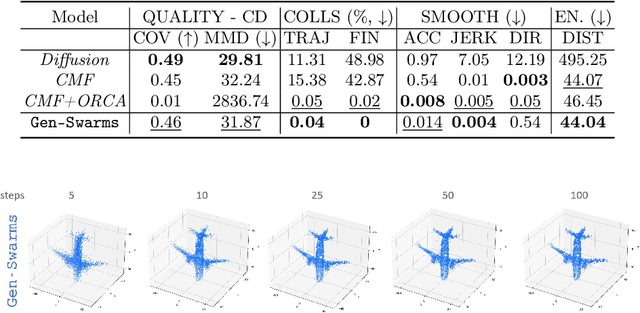Carlos Plou
FALCONEye: Finding Answers and Localizing Content in ONE-hour-long videos with multi-modal LLMs
Mar 25, 2025Abstract:Information retrieval in hour-long videos presents a significant challenge, even for state-of-the-art Vision-Language Models (VLMs), particularly when the desired information is localized within a small subset of frames. Long video data presents challenges for VLMs due to context window limitations and the difficulty of pinpointing frames containing the answer. Our novel video agent, FALCONEye, combines a VLM and a Large Language Model (LLM) to search relevant information along the video, and locate the frames with the answer. FALCONEye novelty relies on 1) the proposed meta-architecture, which is better suited to tackle hour-long videos compared to short video approaches in the state-of-the-art; 2) a new efficient exploration algorithm to locate the information using short clips, captions and answer confidence; and 3) our state-of-the-art VLMs calibration analysis for the answer confidence. Our agent is built over a small-size VLM and a medium-size LLM being accessible to run on standard computational resources. We also release FALCON-Bench, a benchmark to evaluate long (average > 1 hour) Video Answer Search challenges, highlighting the need for open-ended question evaluation. Our experiments show FALCONEye's superior performance than the state-of-the-art in FALCON-Bench, and similar or better performance in related benchmarks.
Gen-Swarms: Adapting Deep Generative Models to Swarms of Drones
Aug 28, 2024



Abstract:Gen-Swarms is an innovative method that leverages and combines the capabilities of deep generative models with reactive navigation algorithms to automate the creation of drone shows. Advancements in deep generative models, particularly diffusion models, have demonstrated remarkable effectiveness in generating high-quality 2D images. Building on this success, various works have extended diffusion models to 3D point cloud generation. In contrast, alternative generative models such as flow matching have been proposed, offering a simple and intuitive transition from noise to meaningful outputs. However, the application of flow matching models to 3D point cloud generation remains largely unexplored. Gen-Swarms adapts these models to automatically generate drone shows. Existing 3D point cloud generative models create point trajectories which are impractical for drone swarms. In contrast, our method not only generates accurate 3D shapes but also guides the swarm motion, producing smooth trajectories and accounting for potential collisions through a reactive navigation algorithm incorporated into the sampling process. For example, when given a text category like Airplane, Gen-Swarms can rapidly and continuously generate numerous variations of 3D airplane shapes. Our experiments demonstrate that this approach is particularly well-suited for drone shows, providing feasible trajectories, creating representative final shapes, and significantly enhancing the overall performance of drone show generation.
CARLOR @ Ego4D Step Grounding Challenge: Bayesian temporal-order priors for test time refinement
Jun 13, 2024Abstract:The goal of the Step Grounding task is to locate temporal boundaries of activities based on natural language descriptions. This technical report introduces a Bayesian-VSLNet to address the challenge of identifying such temporal segments in lengthy, untrimmed egocentric videos. Our model significantly improves upon traditional models by incorporating a novel Bayesian temporal-order prior during inference, enhancing the accuracy of moment predictions. This prior adjusts for cyclic and repetitive actions within videos. Our evaluations demonstrate superior performance over existing methods, achieving state-of-the-art results on the Ego4D Goal-Step dataset with a 35.18 Recall Top-1 at 0.3 IoU and 20.48 Recall Top-1 at 0.5 IoU on the test set.
Active Exploration in Bayesian Model-based Reinforcement Learning for Robot Manipulation
Apr 02, 2024Abstract:Efficiently tackling multiple tasks within complex environment, such as those found in robot manipulation, remains an ongoing challenge in robotics and an opportunity for data-driven solutions, such as reinforcement learning (RL). Model-based RL, by building a dynamic model of the robot, enables data reuse and transfer learning between tasks with the same robot and similar environment. Furthermore, data gathering in robotics is expensive and we must rely on data efficient approaches such as model-based RL, where policy learning is mostly conducted on cheaper simulations based on the learned model. Therefore, the quality of the model is fundamental for the performance of the posterior tasks. In this work, we focus on improving the quality of the model and maintaining the data efficiency by performing active learning of the dynamic model during a preliminary exploration phase based on maximize information gathering. We employ Bayesian neural network models to represent, in a probabilistic way, both the belief and information encoded in the dynamic model during exploration. With our presented strategies we manage to actively estimate the novelty of each transition, using this as the exploration reward. In this work, we compare several Bayesian inference methods for neural networks, some of which have never been used in a robotics context, and evaluate them in a realistic robot manipulation setup. Our experiments show the advantages of our Bayesian model-based RL approach, with similar quality in the results than relevant alternatives with much lower requirements regarding robot execution steps. Unlike related previous studies that focused the validation solely on toy problems, our research takes a step towards more realistic setups, tackling robotic arm end-tasks.
EventSleep: Sleep Activity Recognition with Event Cameras
Apr 02, 2024Abstract:Event cameras are a promising technology for activity recognition in dark environments due to their unique properties. However, real event camera datasets under low-lighting conditions are still scarce, which also limits the number of approaches to solve these kind of problems, hindering the potential of this technology in many applications. We present EventSleep, a new dataset and methodology to address this gap and study the suitability of event cameras for a very relevant medical application: sleep monitoring for sleep disorders analysis. The dataset contains synchronized event and infrared recordings emulating common movements that happen during the sleep, resulting in a new challenging and unique dataset for activity recognition in dark environments. Our novel pipeline is able to achieve high accuracy under these challenging conditions and incorporates a Bayesian approach (Laplace ensembles) to increase the robustness in the predictions, which is fundamental for medical applications. Our work is the first application of Bayesian neural networks for event cameras, the first use of Laplace ensembles in a realistic problem, and also demonstrates for the first time the potential of event cameras in a new application domain: to enhance current sleep evaluation procedures. Our activity recognition results highlight the potential of event cameras under dark conditions, and its capacity and robustness for sleep activity recognition, and open problems as the adaptation of event data pre-processing techniques to dark environments.
 Add to Chrome
Add to Chrome Add to Firefox
Add to Firefox Add to Edge
Add to Edge